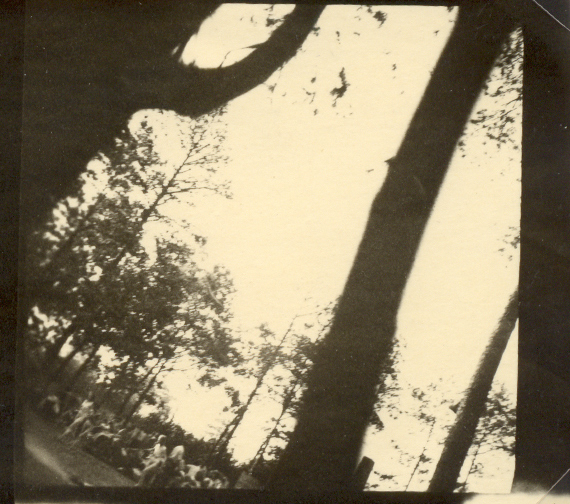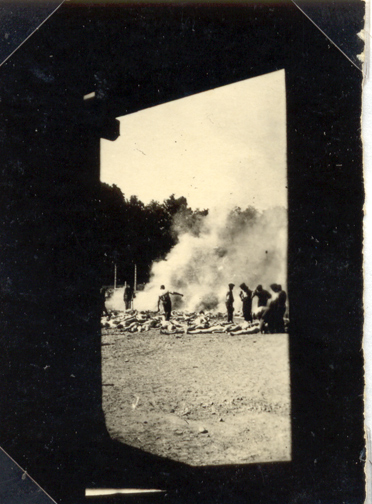In the first years of the camp’s existence the burning of corpses in the Main Camp crematorium was carried out by prisoners of the Heizerkommando (stokers Kommando). Their job was to receive the bodies of prisoners who had died or been killed from the ‘pallbearers’ Kommando (Leichenträgerkommando), take them to the crematorium and burn them.
The first Sonderkommando was immediately formed when the mass extermination of Jews at Birkenau began. It exclusively comprised Jewish prisoners. Some of them worked in the undressing barracks, initially sorting the clothes and other belongings of the murdered victims into piles which were transported to the ‘Canada’ warehouses. Others had to deal directly with the gas chamber, pulling out the corpses, extracting the gold teeth, cutting off the hair, washing off the traces of blood and excrement on the floor and occasionally also whitewashing the walls and floor with lime. Yet another group of prisoners was employed digging and later covering the mass graves.
By mid-1942 there were two Sonderkommandos, one employed at the ‘little red cottage’ and the other at the ‘little white cottage’. Soon a third Sonderkommando was probably formed to dig up the mass graves, pull out the corpses and burn them on pyres. After this work was finished, at the start of December 1942, these prisoners were murdered in a gas chamber. The exact chronology of events is not entirely clear: we know that at least two groups of prisoners from the Sonderkommando had tried to escape. Most probably worried by this fact, the SS decided to kill the entire Kommando, which they did on 9 December. Next a new Sonderkommando was formed by selecting several hundred prisoners from subsequent transports arriving at Auschwitz.
When the new crematoria in Birkenau became operational (in the spring of 1943), the SS employed there prisoners who had previously worked in the old Auschwitz crematorium as well as members of the ‘red’ and ‘white cottage’ Sonderkommandos. The appointed Kapos were professional stokers (one German, five Poles and several Jews). The rest of the Kommando were exclusively Jews. They were quartered in a separate barrack (first in Block 2 of Birkenau BIb and later in Block 13 of Birkenau BIId) and forbidden to have any contact with other prisoners. In 1944 the Sonderkommando was moved to the attics of the crematoria buildings and to Crematorium IV, which was then out of order. The number of Sonderkommando prisoners fluctuated in relation to current needs. When in February 1944 the number of transports fell, the number of Sonderkommando members was reduced to only 200 prisoners (after approximately 200 of their colleagues were transferred to Majdanek and murdered). On the other hand, when the extermination of the Hungarian Jews began, the number of Sonderkommando members rose to some 900 prisoners. Some of these were again employed at the ‘little white cottage’, unloading wood and burning corpses on pyres. The Sonderkommando worked in to two 12-hour shifts, daytime and night time. When despite this problems arose with disposing of all the corpses in time, the victims of the Crematorium V gas chamber were burned not only in the furnaces but also in massive pits, specially dug nearby.
In September 1944 the Sonderkommando was again reduced by 200 prisoners, who were treacherously murdered in one of the disinfection chambers. Fearing that the same fate also awaited them, on 7 October 1944 the remaining Sonderkommando members rebelled. First they attacked SS guards with axes and poles, next they set fire to one of the crematoria and then, having cut through the barbed wire fencing, tried to escape. Unfortunately, all of the escapees were surrounded by the SS near the village of Pławy-Rajsko and shot. The Sonderkommando, reduced to some 200 and later to barely 100 prisoners, continued to exist in the camp until the evacuation in January 1945.
The tragic state of mind of Sonderkommando prisoners is evidenced in the notes they buried near the crematoria, to bear testimony to the truth, and in the accounts (several dozen) some of the survivors submitted after the war.



